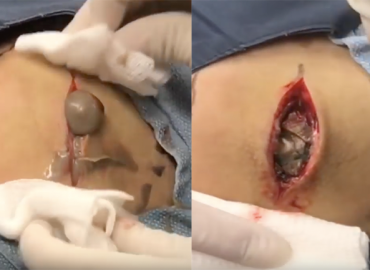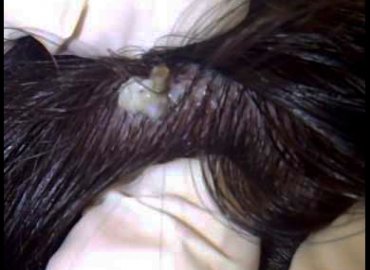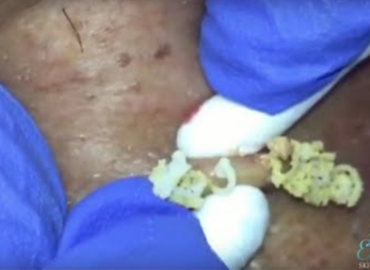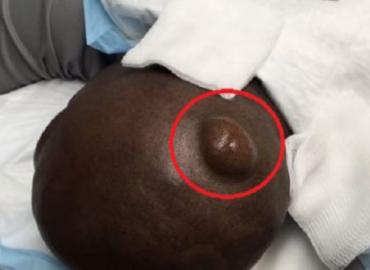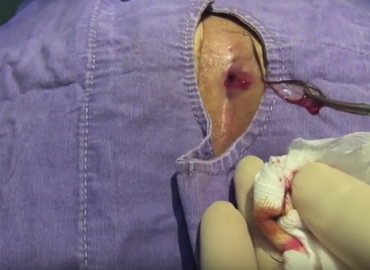Typical features of acne include increased secretion of oily sebum by the skin, microcomedones, comedones, papules, nodules (large papules), pustules, and often results in scarring.The appearance of acne varies with skin color. It may result in psychological and social problems.
Scars
Acne scars are caused by inflammation within the dermal layer of skin and are estimated to affect 95% of people with acne vulgaris. The scar is created by abnormal healing following this dermal inflammation. Scarring is most likely to take place with severe acne, but may occur with any form of acne vulgaris.Acne scars are classified based on whether the abnormal healing response following dermal inflammation leads to excess collagen deposition or loss at the site of the acne lesion.
Atrophic acne scars have lost collagen from the healing response and are the most common type of acne scar (account for approximately 75% of all acne scars). They may be further classified as ice-pick scars, boxcar scars, and rolling scars.Ice-pick scars are narrow (less than 2 mm across), deep scars that extend into the dermis. Boxcar scars are round or ovoid indented scars with sharp borders and vary in size from 1.5–4 mm across.Rolling scars are wider than icepick and boxcar scars (4–5 mm across) and have a wave-like pattern of depth in the skin.
Hypertrophic scars are uncommon, and are characterized by increased collagen content after the abnormal healing response. They are described as firm and raised from the skin. Hypertrophic scars remain within the original margins of the wound, whereas keloid scars can form scar tissue outside of these borders.Keloid scars from acne occur more often in men and people with darker skin, and usually occur on the trunk of the body.
Pigmentation
Postinflammatory hyperpigmentation (PIH) is usually the result of nodular acne lesions. These lesions often leave behind an inflamed darkened mark after the original acne lesion has resolved. This inflammation stimulates specialized pigment-producing skin cells (known as melanocytes) to produce more melanin pigment which leads to the skin’s darkened appearance.People with darker skin color are more frequently affected by this condition. Pigmented scar is a common term used for PIH, but is misleading as it suggests the color change is permanent. Often, PIH can be prevented by avoiding any aggravation of the nodule, and can fade with time. However, untreated PIH can last for months, years, or even be permanent if deeper layers of skin are affected.Even minimal skin exposure to the sun’s ultraviolet rays can sustain hyperpigmentation. Daily use of SPF 15 or higher sunscreen can minimize such a risk.


